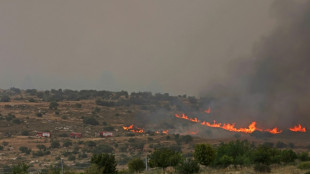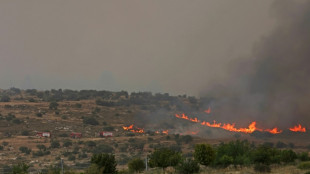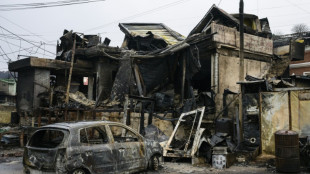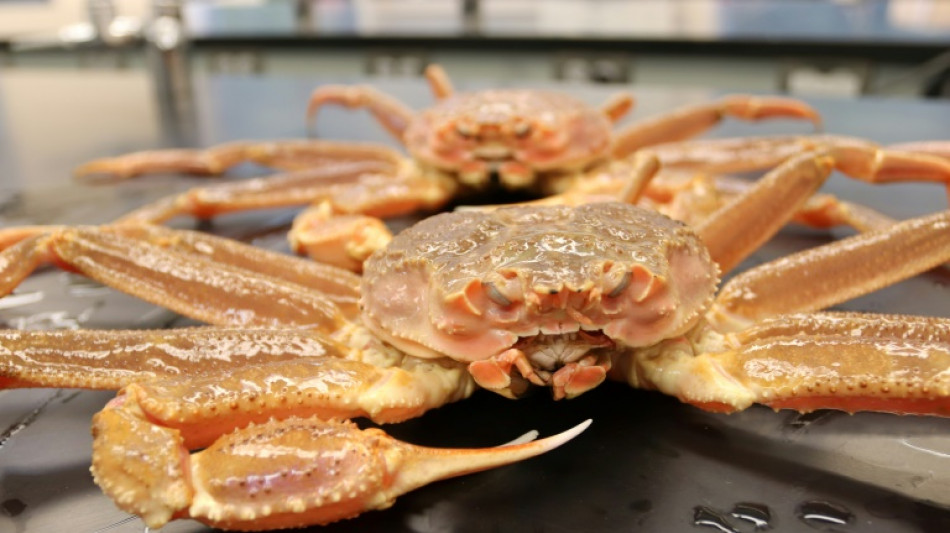
-
 Apple expects $900 mn tariff hit as shifts US iPhone supply to India
Apple expects $900 mn tariff hit as shifts US iPhone supply to India
-
US to end shipping loophole for Chinese goods Friday

-
 Forest's Champions League dreams hit by Brentford defeat
Forest's Champions League dreams hit by Brentford defeat
-
Norris and Piastri taking championship battle in their stride

-
 Chelsea close in on UEFA Conference League final with win at Djurgarden
Chelsea close in on UEFA Conference League final with win at Djurgarden
-
Spurs take control in Europa semi against Bodo/Glimt

-
 Man Utd seize control of Europa League semi against 10-man Bilbao
Man Utd seize control of Europa League semi against 10-man Bilbao
-
With minerals deal, Ukraine finds way to secure Trump support

-
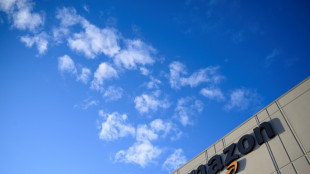 Amazon revenue climbs 9%, but outlook sends shares lower
Amazon revenue climbs 9%, but outlook sends shares lower
-
Trump axes NSA Waltz after chat group scandal

-
 Forest Champions League dreams hit after Brentford defeat
Forest Champions League dreams hit after Brentford defeat
-
'Resilient' Warriors aim to close out Rockets in bruising NBA playoff series

-
 US expects Iran talks but Trump presses sanctions
US expects Iran talks but Trump presses sanctions
-
Baffert returns to Kentucky Derby, Journalism clear favorite

-
 Top Trump security official replaced after chat group scandal
Top Trump security official replaced after chat group scandal
-
Masked protesters attack Socialists at France May Day rally

-
 Mumbai eliminate Rajasthan from IPL playoff race with bruising win
Mumbai eliminate Rajasthan from IPL playoff race with bruising win
-
McDonald's profits hit by weakness in US market
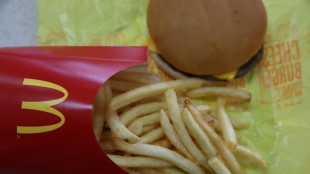
-
 Rio goes Gaga for US singer ahead of free concert
Rio goes Gaga for US singer ahead of free concert
-
New research reveals where N. American bird populations are crashing
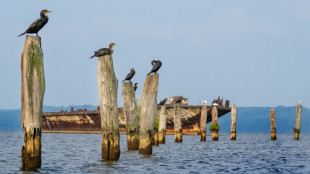
-
 Verstappen late to Miami GP as awaits birth of child
Verstappen late to Miami GP as awaits birth of child
-
Zelensky says minerals deal with US 'truly equal'

-
 Weinstein lawyer says accuser sought payday from complaint
Weinstein lawyer says accuser sought payday from complaint
-
Police arrest more than 400 in Istanbul May Day showdown

-
 Herbert named head coach of Canada men's basketball team
Herbert named head coach of Canada men's basketball team
-
'Boss Baby' Suryavanshi falls to second-ball duck in IPL

-
 Shibutani siblings return to ice dance after seven years
Shibutani siblings return to ice dance after seven years
-
300,000 rally across France for May 1, union says

-
 US-Ukraine minerals deal: what we know
US-Ukraine minerals deal: what we know
-
Top Trump official ousted after chat group scandal: reports

-
 Schueller hat-trick sends Bayern women to first double
Schueller hat-trick sends Bayern women to first double
-
Baudin in yellow on Tour de Romandie as Fortunato takes 2nd stage

-
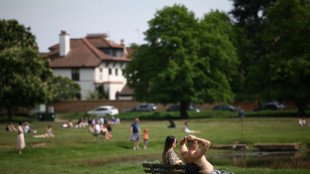 UK records hottest ever May Day
UK records hottest ever May Day
-
GM cuts 2025 outlook, projects up to $5 bn hit from tariffs

-
 Thousands of UK children write to WWII veterans ahead of VE Day
Thousands of UK children write to WWII veterans ahead of VE Day
-
Top Trump official exiting after chat group scandal: reports

-
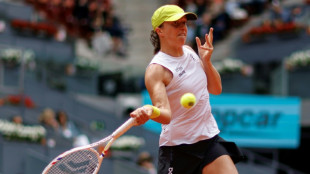 Madrid Open holder Swiatek thrashed by Gauff in semis
Madrid Open holder Swiatek thrashed by Gauff in semis
-
Sheinbaum says agreed with Trump to 'improve' US-Mexico trade balance

-
 US veteran convicted of quadruple murder to be executed in Florida
US veteran convicted of quadruple murder to be executed in Florida
-
UK counter terrorism police probe Irish rappers Kneecap

-
 S. Korea crisis deepens with election frontrunner retrial, resignations
S. Korea crisis deepens with election frontrunner retrial, resignations
-
Trump administration releases report critical of youth gender care

-
 IKEA opens new London city centre store
IKEA opens new London city centre store
-
Police deploy in force for May Day in Istanbul, arrest hundreds

-
 Syria Druze leader condemns 'genocidal campaign' against community
Syria Druze leader condemns 'genocidal campaign' against community
-
Prince Harry to hear outcome of UK security appeal on Friday

-
 Microsoft raises Xbox prices globally, following Sony
Microsoft raises Xbox prices globally, following Sony
-
US stocks rise on Meta, Microsoft ahead of key labor data
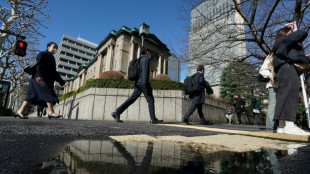
-
 Toulouse injuries mount as Ramos doubtful for Champions Cup semi
Toulouse injuries mount as Ramos doubtful for Champions Cup semi
-
Guardiola glad of Rodri return but uncertain if he'll play in FA Cup final


Warming waters 'key culprit' in Alaska crab mass die-off
Climate change is a prime suspect in a mass die-off of Alaska's snow crabs, experts say, after the state took the unprecedented step of canceling their harvest this season to save the species.
According to an annual survey of the Bering Sea floor carried out by the National Oceanic and Atmospheric Administration, estimates for the crustaceans' total numbers fell to about 1.9 billion in 2022, down from 11.7 billion in 2018, or a reduction of about 84 percent.
For the first time ever, the Alaska Department of Fish and Game announced the Bering Sea snow crab season will remain closed for 2022-23, saying in a statement efforts must turn to "conservation and rebuilding given the condition of the stock."
The species is also found in the more northward Chukchi and Beaufort Seas, but they do not grow to fishable sizes there.
Erin Fedewa, a marine biologist with the Alaska Fisheries Science Center, told AFP the shocking numbers seen today were the result of heatwaves in 2018 and 2019.
The "cold water habitat that they need was virtually absent, which suggests that temperature is really the key culprit in this population decline," she said.
Historically an abundant resource in the Bering Sea, their loss is considered a bellwether of ecological disruption.
There are thought to be several ways that warmer temperatures have depleted the species.
Studies have pointed toward a higher prevalence of Bitter Crab Disease as the temperature heats up.
The crustaceans, named for their love of cold water, are also under greater metabolic stress in warmer waters, meaning they need more energy to stay alive.
"A working hypothesis right now is that the crabs starved, they couldn't keep up with metabolic demands," said Fedewa.
Young snow crabs in particular need low temperatures to hide out from their major predator, Pacific cod, and temperatures in regions where juveniles typically reside jumped from 1.5 degrees Celsius in 2017 to 3.5 Celsius in 2018 (35 degrees Fahrenheit to 38 degrees Fahrenheit) -- with studies indicating 3C might be an important threshold.
- Overfishing not blamed -
More research is underway and findings should be published soon, but in the meantime, "everything really points to climate change," Fedewa said.
"These are truly unprecedented and troubling times for Alaska's iconic crab fisheries and for the hard-working fishermen and communities that depend on them," Jamie Goen, executive director of Alaska Bering Sea Crabbers said in a statement, lamenting that second and third generation crab-fishing families "will go out of business."
The industry was also hit by the cancellation of Bristol Bay red king crab fishing for the second year in a row.
Fedewa also noted that overfishing isn't a big factor in the population collapse of snow crabs.
Fishing removes only large adult males, she said, "and we've seen these declines across all sizes of snow crab, which really suggest some bottom-up environmental driver is at play."
Male Alaska snow crabs can reach six inches (15 centimeters) in shell width, but females seldom grow larger than three inches, according to NOAA.
In some good news, this year's survey saw significant increases in the immature crabs compared to last year -- but it will take four or five years before the males among them grow to fishable size.
Following the heatwave years, temperatures have returned to normal, and "the hope is that leaving crabs untouched will allow them to reproduce, there'll be no mortalities, and we can just let the stock try to recover," said Fedewa.
A hope that is pinned on no further heatwaves.
F.Pavlenko--BTB

